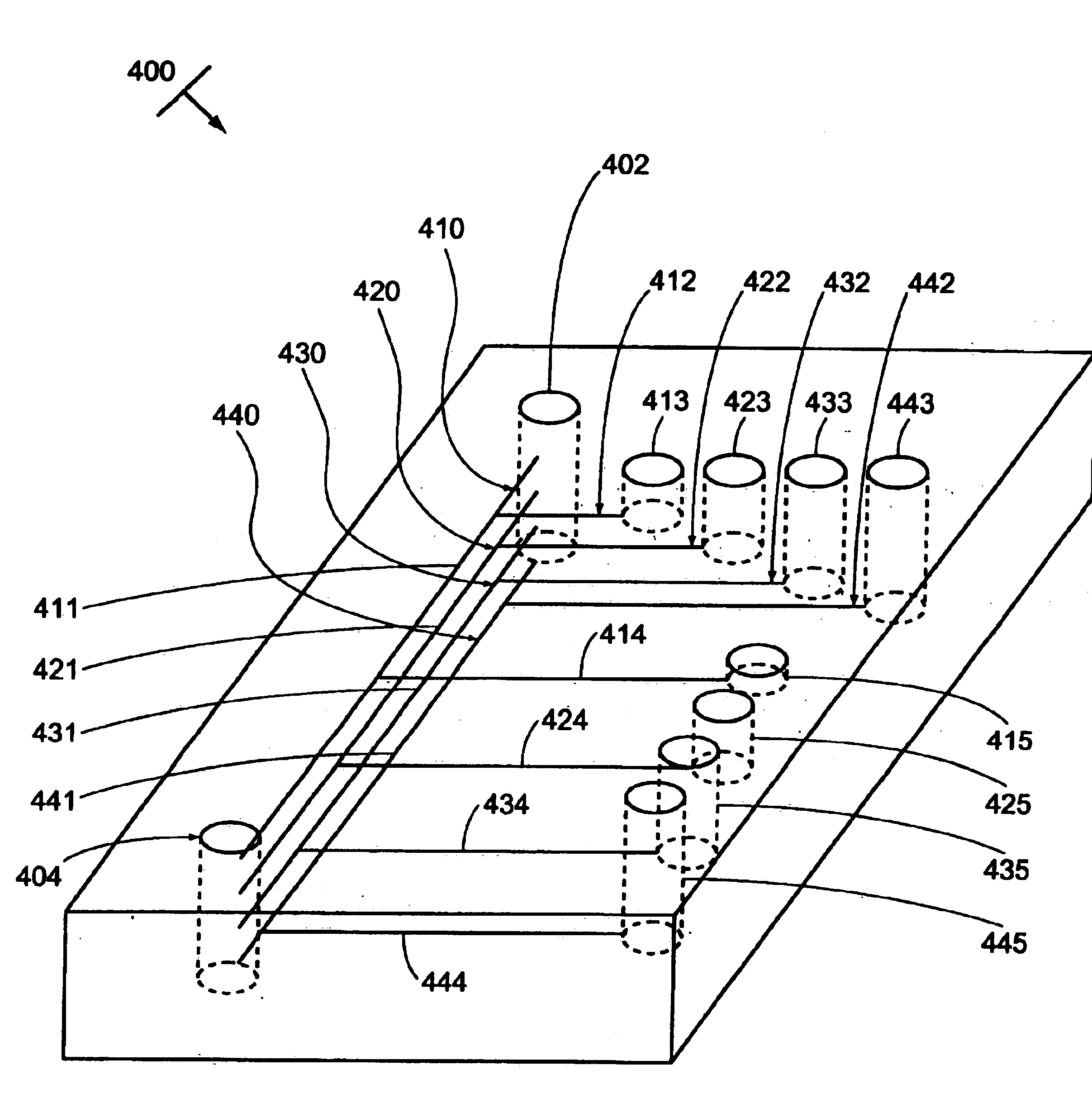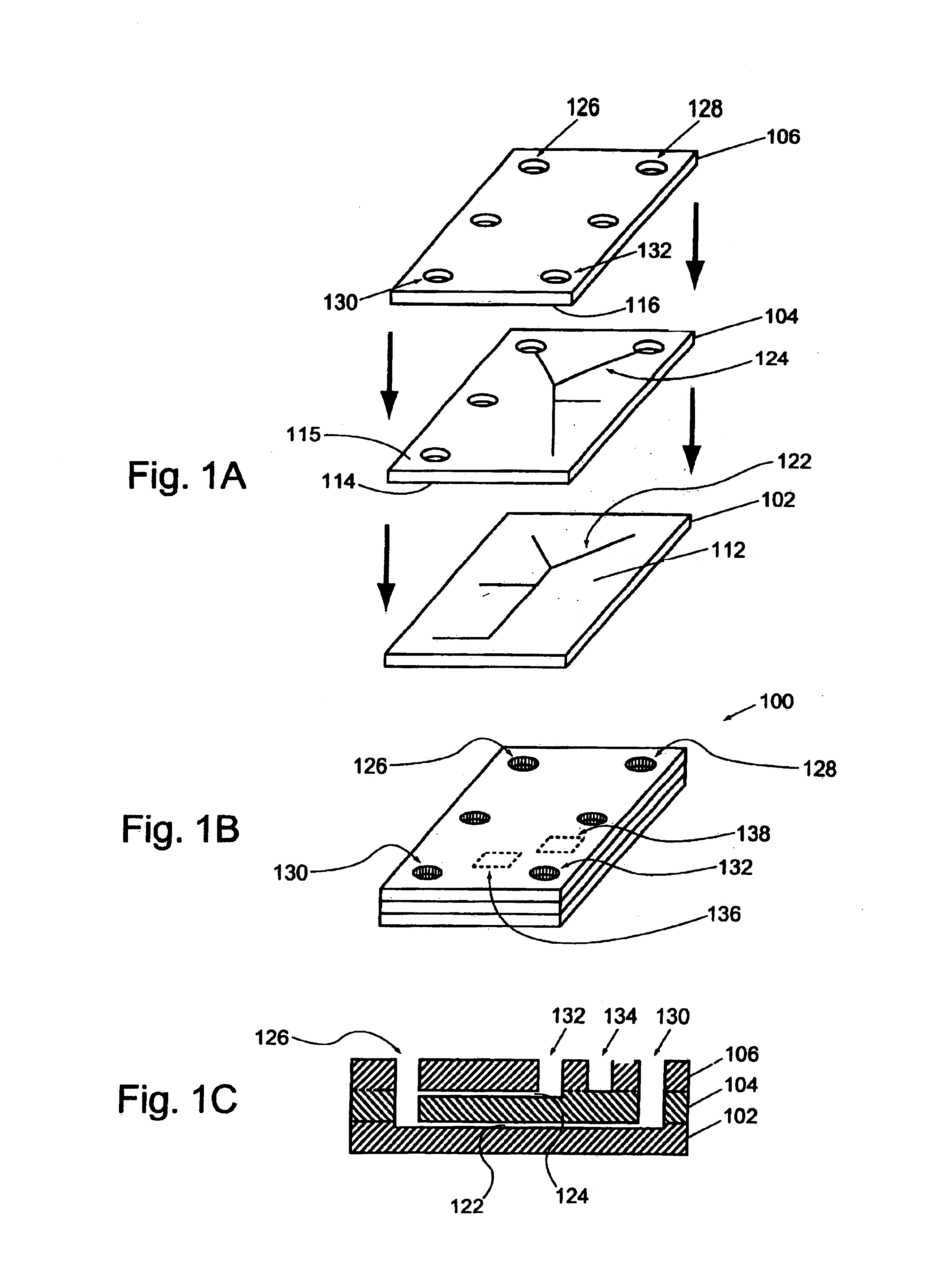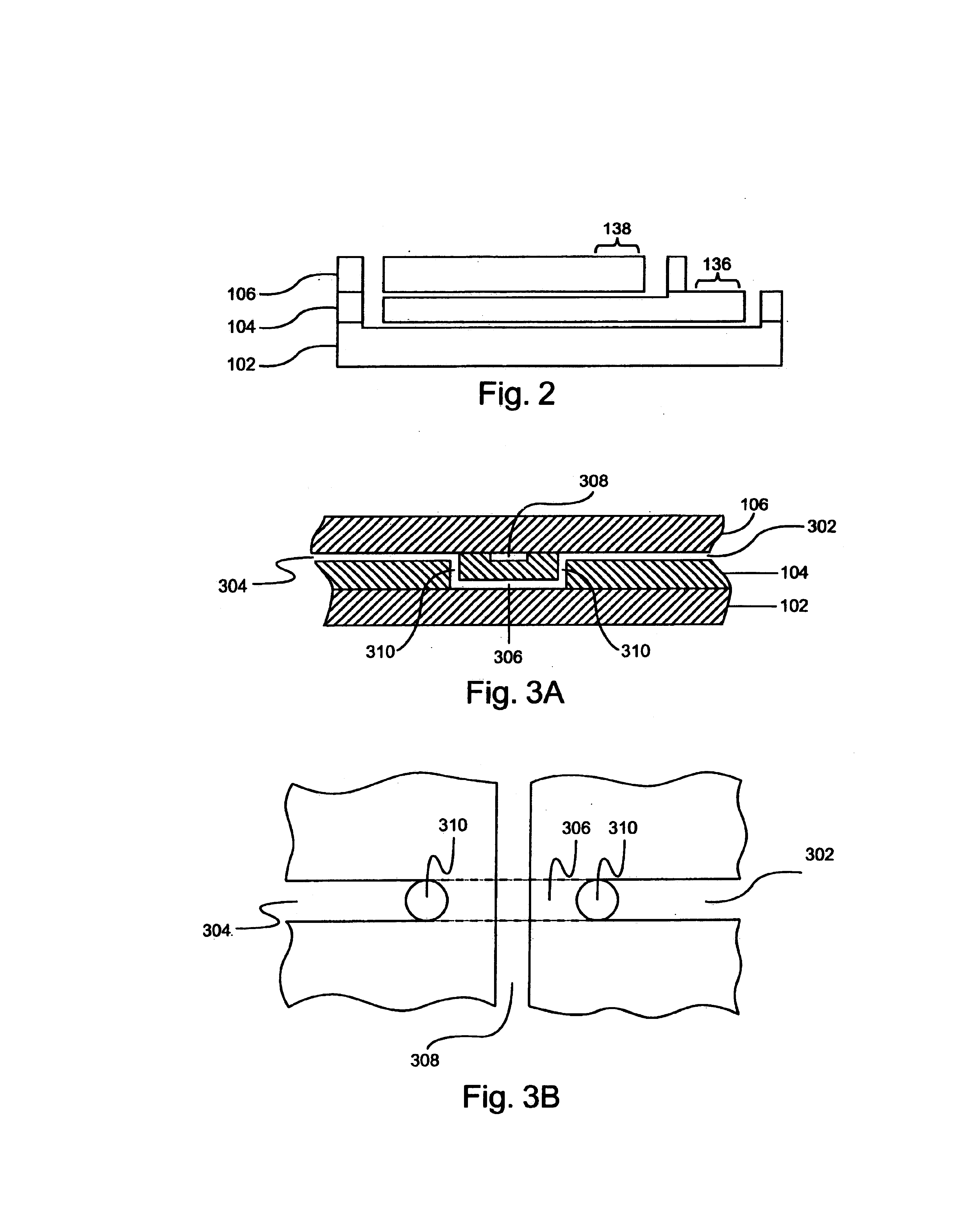Multi-layer microfluidic devices
a microfluidic device and multi-layer technology, applied in the direction of diaphragms, fluid speed measurement, valve details, etc., can solve the problem of limiting the size of the microfluidic device produced in this manner, and achieve the effect of further reducing the size of the microfluidic devi
- Summary
- Abstract
- Description
- Claims
- Application Information
AI Technical Summary
Benefits of technology
Problems solved by technology
Method used
Image
Examples
Embodiment Construction
In most instances, microfluidic devices have been manufactured using microfabrication methods commonly employed in the electronics industry. Such methods generally involve the fabrication of microscale structures, e.g., grooves, wells, depressions and the like, on the upper planar surface of a first solid substrate material. A second substrate layer having a lower planar surface is then bonded over this surface, which covers and seals the grooves and wells to form the channels and chambers. As a result of these manufacturing techniques, microfluidic devices most often employ a planar structure where, aside from their intrinsic depth, the fluidic elements generally exist in two dimensions. The present invention, on the other hand, provides three dimensional microfluidic devices, e.g., employing multi-layered channel structures and networks. By providing multiple layers, the present invention provides a large number of advantages over previously described systems. For example, by prov...
PUM
 Login to View More
Login to View More Abstract
Description
Claims
Application Information
 Login to View More
Login to View More - R&D
- Intellectual Property
- Life Sciences
- Materials
- Tech Scout
- Unparalleled Data Quality
- Higher Quality Content
- 60% Fewer Hallucinations
Browse by: Latest US Patents, China's latest patents, Technical Efficacy Thesaurus, Application Domain, Technology Topic, Popular Technical Reports.
© 2025 PatSnap. All rights reserved.Legal|Privacy policy|Modern Slavery Act Transparency Statement|Sitemap|About US| Contact US: help@patsnap.com



